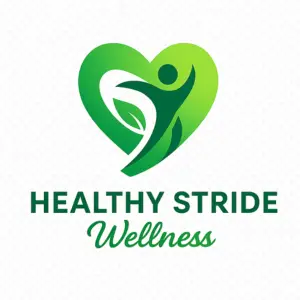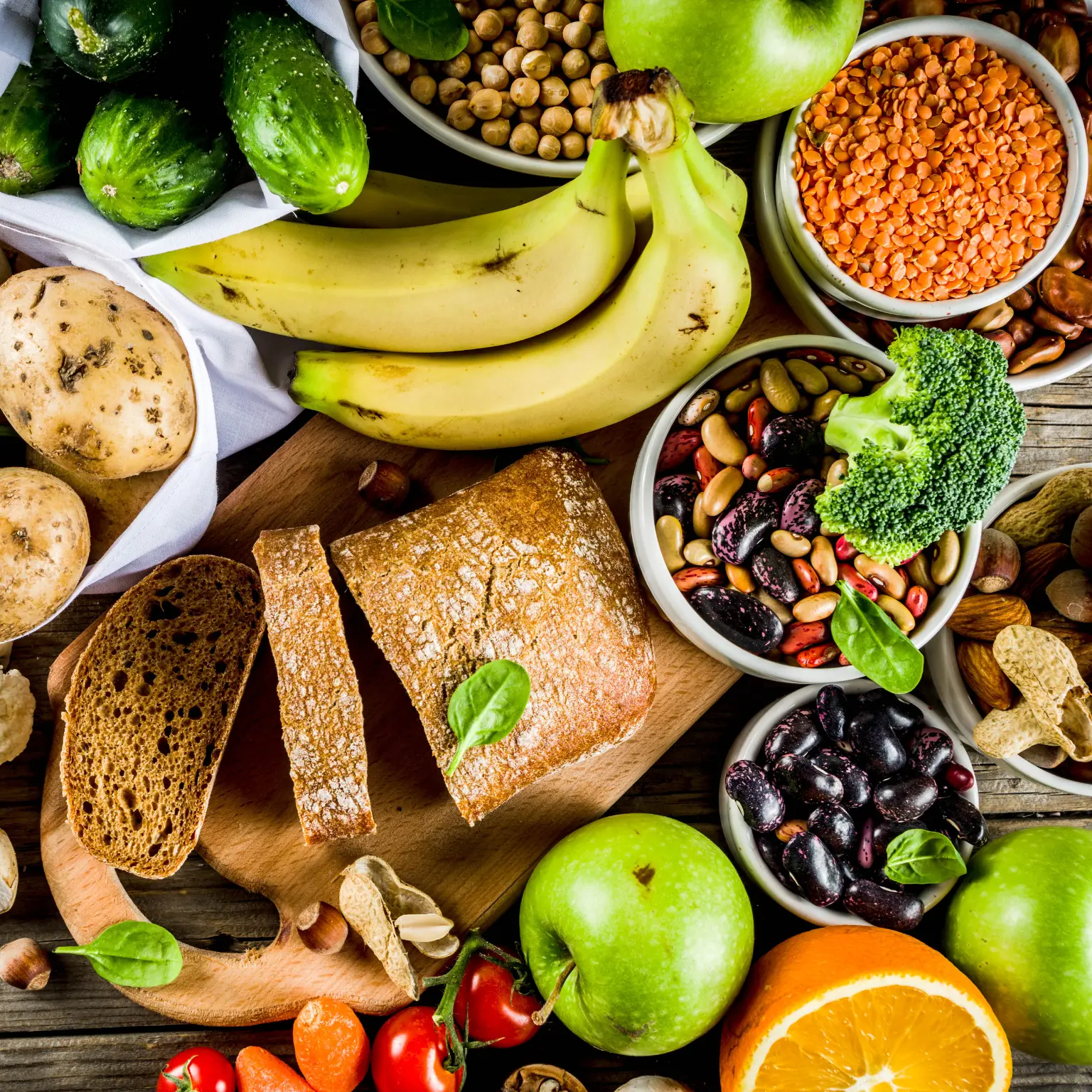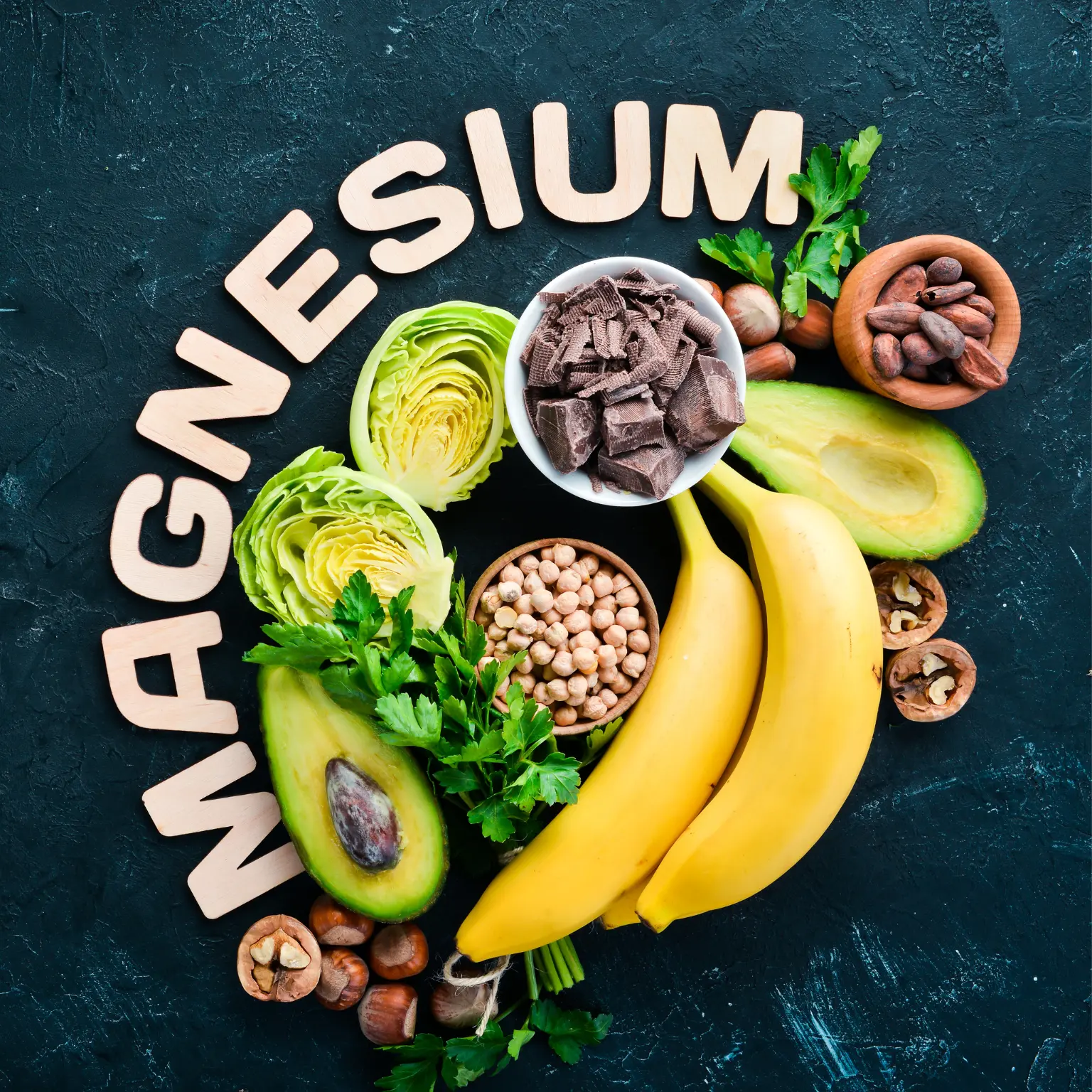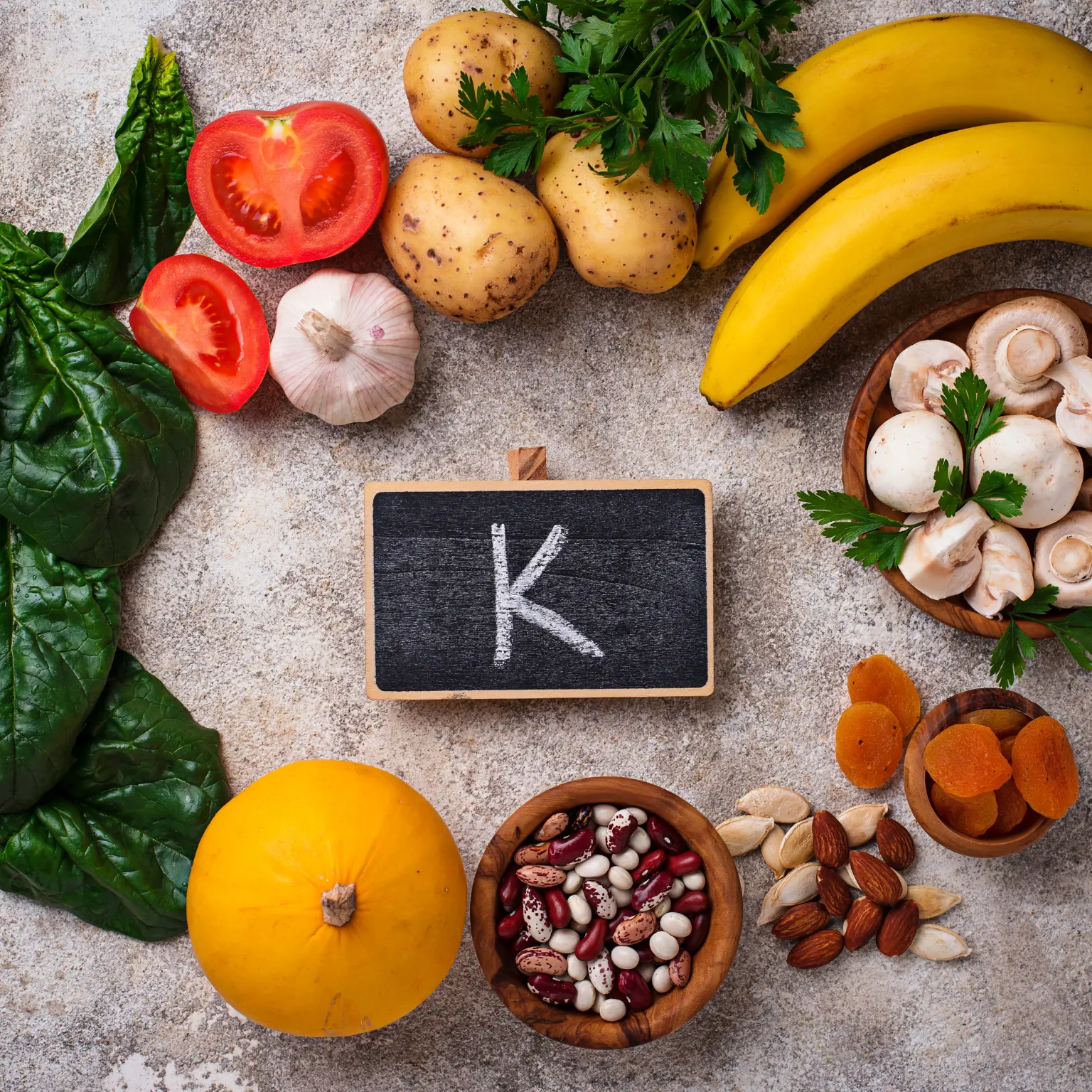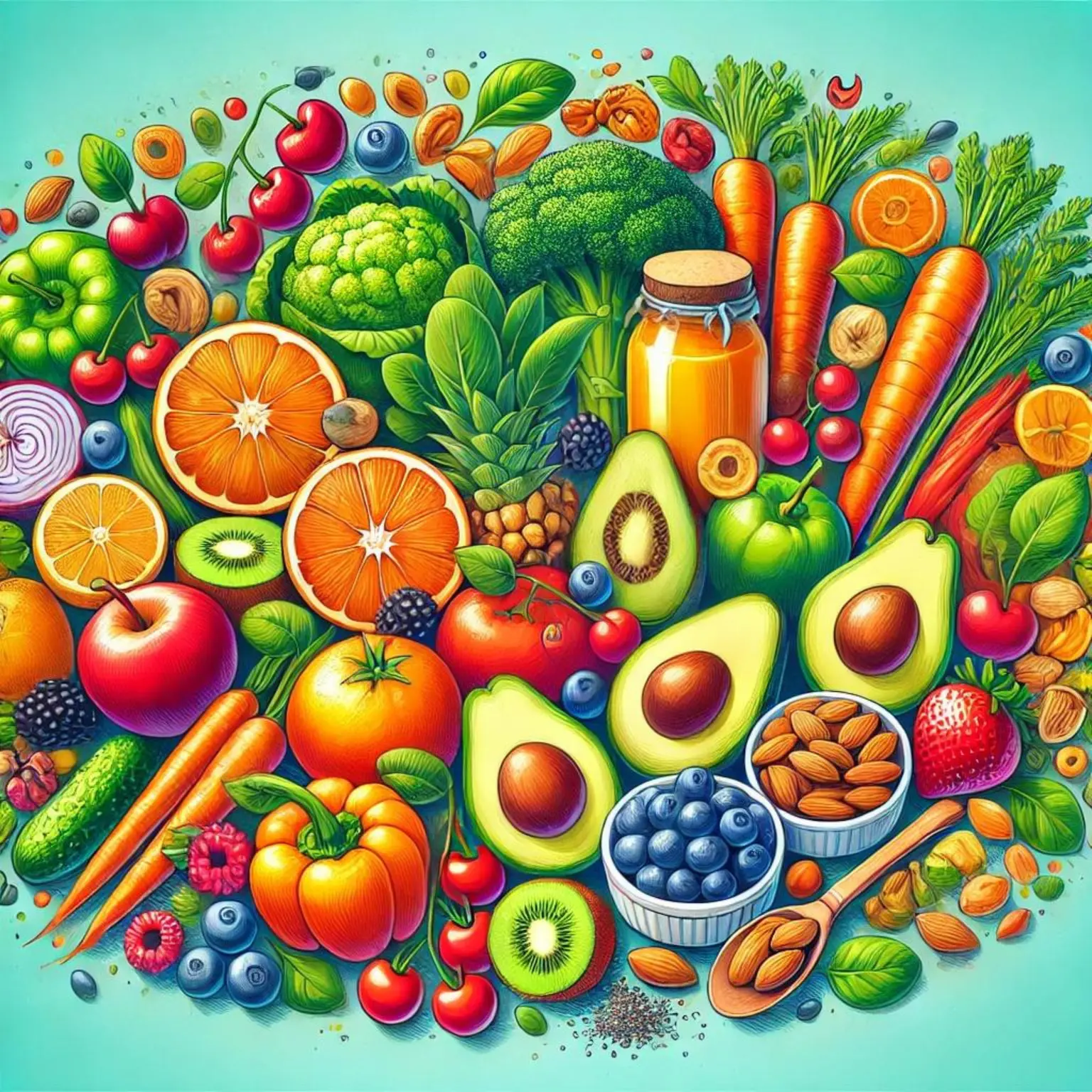Are You Getting Enough Calcium? 8 Foods You’re Missing Out On

Welcome to Healthy Stride Wellness! We’re excited to bring you this insightful blog that addresses an essential aspect of your health: calcium intake. Calcium is a critical mineral that supports various bodily functions, including bone health, nerve signaling, muscle contraction, and blood clotting.
Despite its importance, many individuals—especially those in developed countries like the United States, Canada, and Europe—may not be consuming enough calcium-rich foods. This blog will highlight 8 foods high in calcium that might be missing from your diet, helping you make informed choices to meet your daily calcium needs.
Table of Contents
Key Takeaways
- Calcium is crucial for maintaining strong bones, proper nerve function, and overall health.
- Many people might be unknowingly neglecting important foods high in calcium in their diets.
- Incorporating various foods high in calcium can help you achieve a balanced, nutrient-rich diet.
The Critical Role of Calcium in Your Diet
- Calcium is the most abundant mineral in the human body, with about 99% of it stored in bones and teeth. The remaining 1% is found in blood, muscle, and other tissues, where it is essential for various physiological processes.
- Calcium plays a pivotal role in maintaining the structural integrity of bones, which serve as a reservoir for this mineral. Without adequate intake of foods high in calcium, the body will start to leach calcium from the bones to maintain normal blood levels, which can lead to weakened bones and conditions like osteoporosis.
- Beyond bone health, calcium is also vital for proper muscle function, including the contraction and relaxation of muscles. It’s involved in transmitting nerve impulses throughout the body and plays a role in blood clotting by working with other proteins and nutrients.
- Given these critical functions, it’s clear why maintaining adequate calcium levels through foods high in calcium is crucial for overall health and well-being.
Understanding Your Daily Calcium Requirements
- Calcium needs vary based on age, gender, and life stage. For most adults, the recommended daily intake is around 1,000 mg. However, women over the age of 50 and men and women over 70 require about 1,200 mg daily due to increased bone loss associated with aging. Meeting these requirements through foods high in calcium is essential for preventing long-term health issues, particularly as you age.
- Unfortunately, many people fall short of these recommendations, either because they are unaware of their daily calcium needs or because their diet lacks sufficient foods high in calcium.
- This can be particularly problematic in developed countries where processed foods often take precedence over whole, nutrient-dense options.
Calcium and Bone Health: Building a Strong Foundation
- Bone health is one of the most significant reasons why calcium is so vital. Throughout your life, your bones are constantly being broken down and rebuilt—a process known as bone remodeling.
- During childhood and adolescence, bone formation outpaces bone resorption, leading to the growth and strengthening of bones. However, as you age, this process slows down, and bone resorption begins to exceed formation, leading to a gradual loss of bone density.
- This is why foods high in calcium are especially critical during the early years of life, as well as in adulthood, to maintain bone density and prevent conditions like osteoporosis. Osteoporosis is a condition characterized by weak and brittle bones, which significantly increases the risk of fractures.
- Ensuring an adequate intake of foods high in calcium can help maintain bone strength and reduce the risk of osteoporosis, particularly in older adults.
Common Dietary Sources of Calcium
- When thinking about calcium, dairy products like milk, cheese, and yogurt often come to mind. While these are excellent sources of calcium, they are not the only options available.
- A well-rounded diet should include a variety of foods high in calcium, especially for those who are lactose intolerant, vegan, or simply looking to diversify their nutrient intake.
- Let’s explore some lesser-known yet highly beneficial foods high in calcium that you might be missing out on.
Leafy Green Vegetables: A Powerhouse of Nutrients
- Leafy green vegetables are not only packed with vitamins and minerals but are also excellent foods high in calcium. Vegetables like kale, collard greens, bok choy, and turnip greens offer a substantial amount of calcium in addition to other nutrients like vitamin K, which is crucial for bone health.
- For example, if you have a cup of cooked collard greens, you’ll get around 266 mg of calcium. Spinach, while also rich in calcium, contains oxalates, which can bind to calcium and reduce its absorption. However, it still contributes to overall calcium intake and offers numerous other health benefits.
- These greens can easily be incorporated into your diet by adding them to salads, soups, stir-fries, or smoothies, making them a versatile and nutritious addition to your meals.
Sardines and Canned Salmon: Unexpected Calcium Boosters
- Fish like sardines and canned salmon are excellent non-dairy foods high in calcium, thanks to their edible bones. A 3-ounce serving of sardines provides approximately 325 mg of calcium, while canned salmon with bones offers around 180 mg per serving.
- These fish are also rich in omega-3 fatty acids, which have numerous health benefits, including reducing inflammation and supporting heart health.
- Including sardines or canned salmon in your diet can be as simple as adding them to salads, spreading them on whole-grain crackers, or incorporating them into pasta dishes. Their high calcium content, combined with other essential nutrients, makes them valuable foods high in calcium.
Fortified Foods: An Easy Way to Boost Calcium Intake
- Fortified foods are an excellent way to increase your calcium intake, especially if you’re following a dairy-free or plant-based diet. Many plant-based milks, such as almond, soy, and oat milk, are fortified with calcium, often providing similar or even higher calcium content than cow’s milk.
- Fortified orange juice and breakfast cereals are other common foods high in calcium that can help you meet your daily calcium needs.
- When choosing fortified foods high in calcium, it’s essential to read the labels to ensure you’re getting adequate calcium and other nutrients like vitamin D, which aids in calcium absorption.
- Incorporating these fortified options into your daily routine—whether in your morning cereal, coffee, or as a snack—can significantly contribute to your overall calcium intake.
Tofu and Soy Products: A Plant-Based Calcium Source
- Tofu, particularly the calcium-set variety, is a highly nutritious and versatile food that provides a significant amount of calcium.
- Just half a cup of calcium-set tofu can contain around 253 mg of calcium. Soybeans and other soy products like tempeh are also excellent foods high in calcium and provide an excellent source of plant-based protein.
- These foods high in calcium are especially beneficial for those following a vegetarian or vegan diet.
- Tofu can be used in a variety of dishes, from stir-fries to smoothies, and can even be used as a dairy substitute in some recipes, making it a versatile addition to your meals.
Almonds: A Nutritious and Calcium-Rich Snack
- Almonds are not only a convenient and delicious snack but also one of the foods high in calcium.
- Did you know that a single ounce of almonds has roughly 76 milligrams of calcium? In addition to calcium, almonds are packed with healthy fats, protein, fiber, and vitamin E, making them a nutrient-dense option for maintaining overall health.
- You can easily incorporate almonds into your diet by eating them as a snack, adding them to salads, or using almond butter in place of other spreads. Their rich nutrient profile makes them one of the best foods high in calcium for a healthy, balanced diet.
Chia Seeds: A Tiny Superfood Packed with Calcium
- Chia seeds are often hailed as a superfood due to their high nutrient content, including calcium. Just one ounce (about two tablespoons) of chia seeds contains approximately 179 mg of calcium. These tiny seeds are also rich in omega-3 fatty acids, fiber, and antioxidants, offering a range of health benefits.
- Chia seeds are incredibly versatile foods high in calcium and can be added to a variety of dishes, including smoothies, yogurt, oatmeal, and even baked goods.
- They can also be used to make chia pudding, a simple and nutritious dessert or snack that’s rich in calcium and other essential nutrients.
Beans and Lentils: Fiber-Rich and Calcium-Loaded
- Beans and lentils are excellent sources of plant-based protein, fiber, and calcium. White beans, in particular, are among the foods high in calcium, with one cup providing about 161 mg of calcium.
- Other beans, such as black beans, chickpeas, and lentils, also contribute to calcium intake, making them valuable foods high in calcium in a balanced diet.
- Incorporating beans and lentils into your meals is easy—add them to soups, stews, and salads, or use them as a base for veggie burgers. Their versatility and nutrient density make them essential foods high in calcium and other important nutrients.
Exploring How Vitamin D Helps Your Body Absorb Calcium?
- While consuming foods high in calcium is crucial, it’s equally important to ensure you’re getting enough vitamin D.
- Vitamin D enhances calcium absorption in the intestines, helping to maintain adequate blood calcium levels and promoting bone health.
- Without sufficient vitamin D, your body may not absorb enough calcium, even if your intake is high.
- Vitamin D can be obtained from sunlight exposure, certain foods like fatty fish-fortified dairy products, and supplements. Ensuring you get enough vitamin D is essential for maximizing the benefits of foods high in calcium and maintaining overall health.
Recognizing Signs of Calcium Deficiency
- Calcium deficiency can manifest in various ways, often with subtle symptoms that can be easily overlooked. Early signs of deficiency include numbness and tingling in the fingers, muscle cramps, and abnormal heart rhythms.
- Over time, a lack of foods high in calcium can lead to more severe conditions such as osteoporosis, dental problems, and brittle bones.
- Recognizing these symptoms early and adjusting your diet to include more foods high in calcium can help prevent long-term health issues.
- If you suspect you’re not getting enough calcium, it’s important to consult with a healthcare professional who can recommend dietary changes or supplements to meet your needs.
Tips for Increasing Calcium Intake
- Increasing your calcium intake doesn’t have to be complicated. Start by incorporating a variety of foods high in calcium into your meals. For example, add leafy greens to your salads, enjoy a serving of sardines or canned salmon, and choose fortified plant-based milk.
- Snacking on almonds and chia seeds, or adding them to your dishes, can also help boost your calcium levels.
- Additionally, cooking with bone broth, which is rich in calcium and other minerals, can be a nutritious way to increase your intake.
- Experimenting with different recipes and foods high in calcium will not only help you meet your calcium needs but also add variety and excitement to your diet.
In Short
Thank you for visiting Healthy Stride Wellness! We hope this blog has provided you with valuable insights into the importance of calcium and how to ensure you’re getting enough of it in your diet.
Remember, maintaining a diet rich in foods high in calcium is crucial for your overall health, especially for bone strength and preventing conditions like osteoporosis. Incorporating a variety of foods high in calcium into your daily meals can help you meet your nutritional needs and support long-term health.
Follow Healthy Stride Wellness for more insights and tips on maintaining a balanced and healthy lifestyle. Don’t forget to check out our other blogs related to nutrients and diet for more information on how to optimize your health through proper nutrition and dietary choices.
FAQs
Wondering about getting sufficient calcium while being lactose intolerant?
Yes, you can still meet your calcium needs if you’re lactose intolerant by consuming non-dairy foods high in calcium such as leafy greens, fortified foods, almonds, and chia seeds.
Is it better to get calcium from food or supplements?
It’s generally better to get calcium from foods high in calcium because it comes with other beneficial nutrients. However, supplements can be used if you’re unable to meet your needs through diet alone.
How does age affect calcium requirements?
Calcium requirements increase with age, especially for women after menopause and for everyone over 70, due to a higher risk of bone density loss. Consuming foods high in calcium becomes even more important in these stages.
Please Note: Healthy Stride Wellness provides educational content and is not a replacement for medical advice. Consult a healthcare provider for any health issues.
